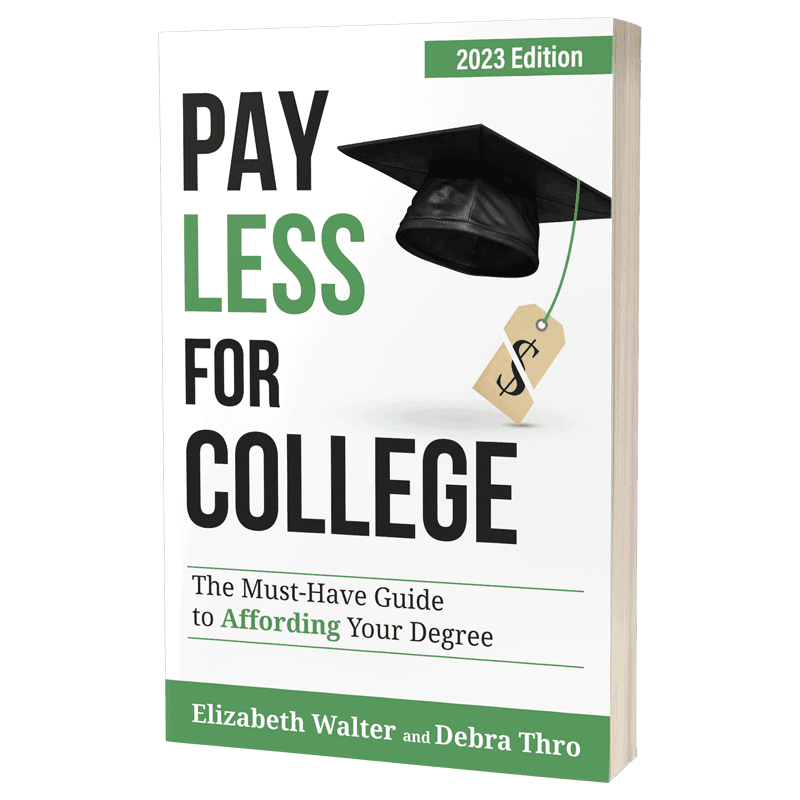Updated October 9, 2022
8 Clues to Understanding What a College is Really Going to Cost You
April is an exciting time in the college admissions process. Colleges have made their choices and your decision letters are posted on your online portals or have arrived by mail. You’ve probably also received your financial aid packages. Now is the time to carefully scrutinize them to figure out your Net Price at each school—the dollar amount you have to pay to attend. Net Price includes your EFC (Expected Family Contribution) and, if present, any Federal Direct Loans, State Loans, Work-Study (on-campus employment), and unmet need, otherwise known as the GAP. Our Financial Aid Award Comparison Worksheet helps you pick apart your first-year awards and find your Net Price. However, your first-year Net Price does not necessarily reflect what you’ll pay in subsequent years. Each year you’ll get a new financial aid package and, depending on the college’s financial aid policies, they may look VERY different than your first-year year award. The truth is, your Net Price is almost certain to be higher each year you attend. It’s important to find out how and by approximately how much your Net Price may increase each year—information not revealed in your first-year award. To get an accurate estimate of the TOTAL cost of your 4-year degree, pull out your calculator, call the college’s financial aid office, and get the answers to the following 8 questions:1. How Much Will the Cost of Attendance (COA) Increase Each Year?
COA includes Direct Costs (tuition, fees, room and board) and Indirect Costs (an average cost of books, supplies, travel, and personal expenses). If the full COA is not listed in your award letter, find it on the college’s website. Most colleges raise their COA each year by 2-3%. To get an idea of the likely annual COA increase at each college that has accepted you, look at their expenses statistics on the U.S. Department of Education’s College Navigator website.2. Will My Financial Need Change Each Year?
Your financial need is determined by this equation: Need = COA – EFC Your EFC is generated by an analysis of parent and student income and assets on the FAFSA and appears on your Student Aid Report. If there are no major changes in family income or assets while you’re in school, and if the number of children in college at the same time remains the same, your EFC will be roughly the same each year at a given college. If your EFC remains the same, your financial need will only change a little as the COA increases each year.3. Will the Free Money In My First Year Package Remain the Same Each Year?
Free money (money you don’t have to pay back) includes Grants and Scholarships. Grants are based on financial need and can come from the federal government (Pell, FSEOG, TEACH, IASG), the state government, and the colleges themselves. Federal grants will remain roughly the same all four years if your financial need remains similar. State grants fluctuate each year depending on state budgets and on the number of students applying for aid, making it hard to predict your award year to year. Be conservative in your estimates. College grants at some colleges will remain similar each year if your financial need remains similar and usually if you maintain a minimum GPA set by the college. However, many colleges practice “front-loading” of need-based awards, giving you a generous package in your first year to entice you to enroll and then cutting grant aid (sometimes significantly) in subsequent years. Call each college and ask if your need-based grant will be reduced after freshman year. If so, ask by how much so you can make a true comparison of 4-year costs. Scholarships are based on merit or other student attributes and can come from outside organizations (business, civic, community) not affiliated with the college or from the college itself (institutional). If you have an Outside Scholarship, you are required to report it to the college and it will be included in your financial aid package. If your outside scholarship is good only for your first year, ask the college if you will be responsible in subsequent years for the costs covered by that scholarship. If you’ve been awarded an Institutional Scholarship, ask the college these questions: 1. Is the scholarship renewable for all four years? If not, ask if you will be responsible for the costs it covered in freshman year or if the college will award you need-based grant aid to cover those costs (given that you have financial need) .2. What are the conditions for renewal (e.g. minimum GPA, sports or arts requirements, etc.)? If you lose the scholarship at any point, will need-based aid be applied to those costs?
3. What happens to a renewable scholarship if you take longer than 4 years to graduate? 4. Will the scholarship increase as the COA increases each year (usually ~ 3%)?4. How Much Self-Help Aid Will I Be Awarded Each Year?
Self-Help aid includes Federal and State student loans and Federal Work-Study. If you have financial need, your financial aid package will almost always include Federal Direct student loans, a state loan (if available), and usually a Work-Study award. The maximum Direct loan amounts will change each year ($5,500 for freshmen, $6,500 for sophomores, and $7,500 for Junior and Senior years). Your Work-Study award usually remains similar year to year as long as your financial need doesn’t change (averaging between $1500-$2000/year). You do not have to accept Work-Study awards or Federal or State student loans, but you are responsible for the costs they would have covered, including the increases in Federal Direct loans after freshman year.5. Is there a GAP and Will It Change In Later Years?
97% of US colleges and universities do not meet 100% of your financial need, and leave you with a GAP in financial aid that you are responsible for paying. GAP = Financial Need (COA – EFC) – Grants and Scholarships – Self-Help Aid Figuring out what your GAP will be after freshman year is tricky. If your financial need remains similar, here are three possibilities for how your Net Price may be affected: 1. If the college gives you a similar need-based grant each year, your GAP will get smaller simply because Federal loans limits go up in sophomore, junior, and senior years. So, more Self-Help aid and a smaller GAP, but Net Price remains the same. 2. If the college reduces the amount of your grant by the increase in Federal loan limits your GAP will remain the same, but your Net Price will go up. 3. If the college practices front-loading of your need-based grant, and cuts your grant in subsequent years, both the GAP and your total Net Price can increase significantly. Ask the college about their need-based aid policies after freshman year.6. Does the College Practice “Scholarship Displacement?”
A small number of colleges will apply an Outside scholarship to your federal and state student loans, thereby reducing your Net Price. However, many colleges will award you the federal and state loans you qualify for and apply your outside scholarship to your remaining need in a practice called “Scholarship Displacement.” These schools argue that your outside scholarship reduces the grant aid you need from the college. In these cases, your scholarship goes toward the COA without actually reducing your Net Price. Find out the college’s policy regarding outside scholarships and whether or not your scholarship is actually reducing your Net Price. If you discover the college practices scholarship displacement, contact the scholarship provider and see if they can help you negotiate the allocation of some or all of your outside scholarship to your Net Price. If you are awarded an Institutional scholarship, usually it will be applied to your need before any need-based grants are awarded.7. How Much Will My Education Loans Increase My Total Net Price?
Net price each year includes your EFC, which you may not be able to pay out-of-pocket each year. You may have to consider taking out additional education loans. Parents with acceptable credit can get a Federal PLUS loan for any accredited college and many banks and credit unions offer private student loans in the student’s name (usually requiring a co-signer). Determine how much you may have to borrow to attend a school for four years, and plug your loan amounts into a student loan payment calculator to estimate the total cost of your loans. For example, if you borrow a total of $35,000 at 6% interest, you will pay $390/month for 10 years. The total cost of your loans will be $46,628, adding an additional $11,628 to the cost of your 4-year degree.8. What Is the College’s 4-Year Graduation Rate?
Many students fail to graduate in four years. Obviously, if you take 5 or 6 years to get your 4-year degree, you’re going to pay a lot more. In addition, most renewable scholarships and some need-based college grants end after 4 years, which can dramatically increase your Net Price in the 5th and 6th year. If you are concerned about college costs, choose a college from which you are likely to graduate on time. Check a college’s 4-year graduation rate at the U.S. Department of Education’s College Navigator website. If it is very low, find out why. It’s not always the college’s fault, but some schools have trouble retaining freshmen and/or do a poor job with class scheduling and advising, leaving many students unable to finish required classes in 4 years. Don’t get snookered by opaque financial aid award letters. Get the information you need to get a good estimate of your Total Net Price at each school. The easier numbers to find for each year are:- The COA (with yearly 2-3% increases)
- Your EFC (which will remain similar if your financial situation remains similar)
- The dollar amount of federal financial aid you qualify for (grants and loans) each year.
- the college’s policies regarding both outside and institutional scholarships.
- if the college will give you a similar need-based grant each year, given that your financial need remains similar.
- the costs you are responsible for in a 5th or 6th year.
- the total cost of the loans you have to take out to attend for four years.
Learn More!
Paying for college shouldn’t be harder than going to college!



